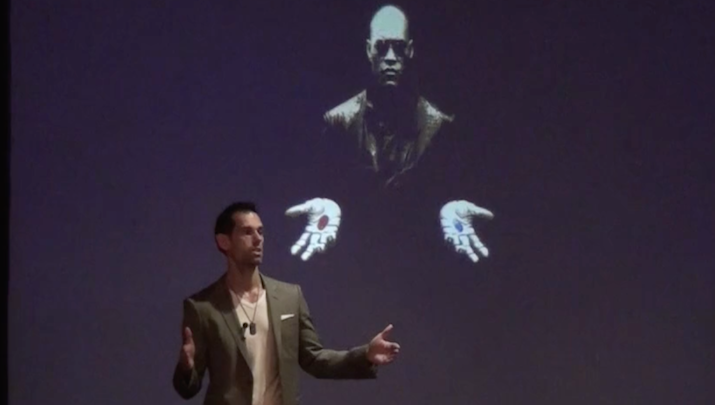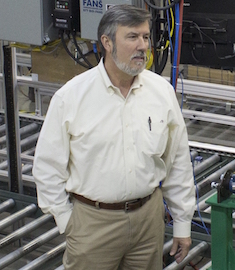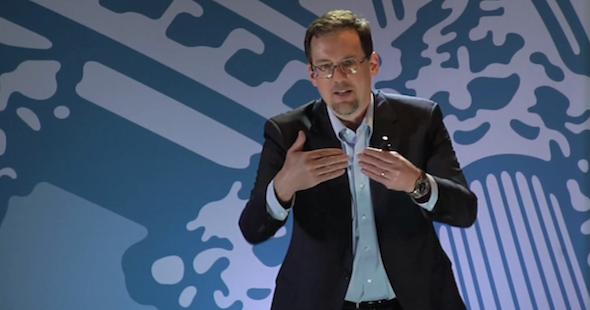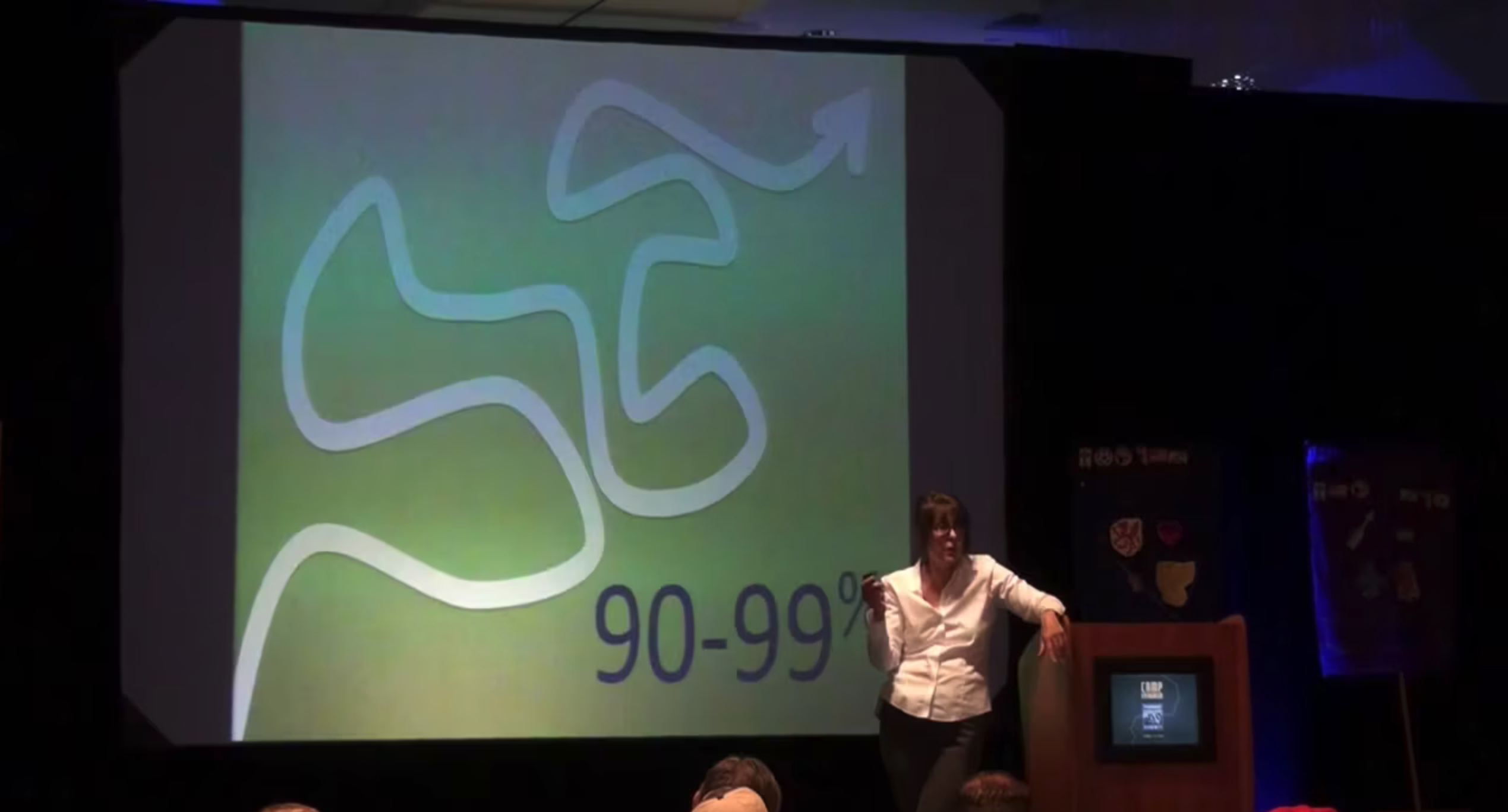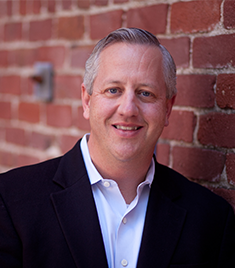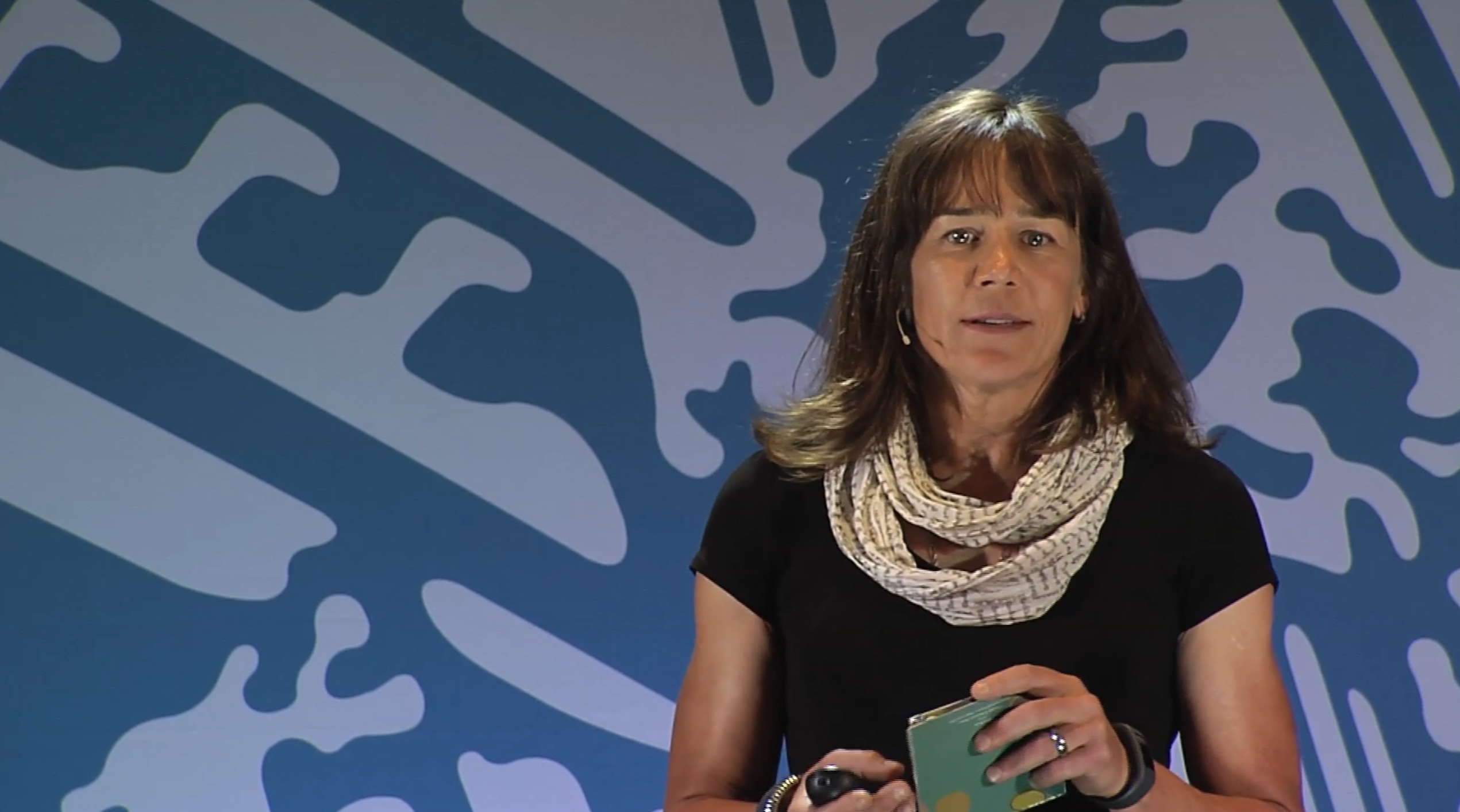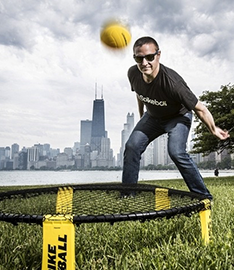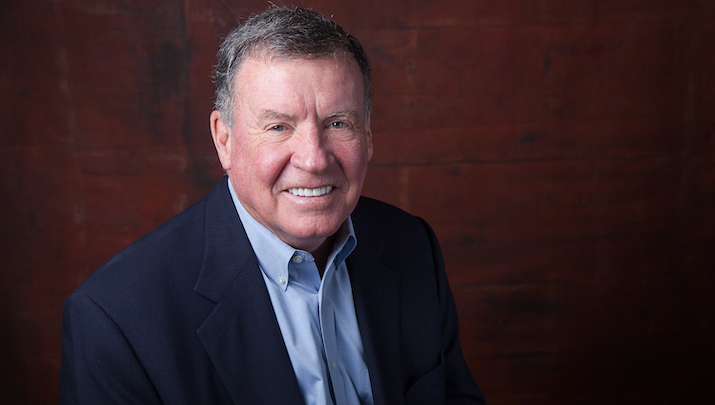Why I Only Hire Weird People
Weird people change the world.
When I co-founded my environmentally friendly soap company, Method, in 2001, I quickly realized that we were up against some mighty big competition. Cleaning-product companies like Procter & Gamble and SC Johnson were multinational and had 100-year head starts on me; they had strong control over grocery store shelves and well-entrenched relationships with the big-box stores. In order to compete against these Goliaths, Method had to be different. And that started with my employees.
If I wanted my people to go a mile in one direction, I needed them to set a milestone two miles out. The best people who could successfully complete this task? The weird ones. I generally find that people with a little dose of weird are more motivated to do things differently, as they find normal boring. They are naturally wired to go the distance to create change because conformity is uncomfortable for them.
My co-founder, Adam Lowry, and I sought to hire — and keep — that specific demographic. We liked people showing up as their personal selves, not their professional ones. People do their best work when they are comfortable in their own skin. So we established a test to make sure we were getting the right folks through the door. We would give every final candidate three questions as a homework assignment. The first two questions would be tailored to the role. But the third was always “How would you keep Method weird?”
People were given great freedom in how to answer this question. One person led an entire band into our conference room to play a song. We’ve had a spontaneous yoga session and a tennis match in the alley. It’s all over the place. The best answers are not necessarily events but personal stories that really describe who the candidate is and what they will bring to Method.
Our hiring strategy paid off. The weird folks we hired were aligned with our vision of the company and helped us grow like crazy. Over the course of 15 years, Method completely changed how people look at and buy cleaning products. I’m proud to see how we have made our mark with clean, green, beautifully packaged products — and how they have even influenced our competition’s lines.
I still do some work at Method, but last year Adam and I co-founded a new, Evergreen company called Olly, which is going to do for vitamins what Method did for cleaning products. Evergreen companies put their people first because a company's employees are its best asset. Letting our employees show their true colors is our way of building a workforce that is going to be as dedicated to our mission as we are.
Asking potential employees to help keep Olly weird helps people let their guard down, and we get a real sense of who they are. Plus, this prevents window shopping. Candidates willing to work on a homework assignment like this one are serious about the job.
Once we hire, my challenge is to make sure our employees stay weird and are always given opportunities to march to a different beat. That’s tricky when you need to have a cohesive team. We’ve found a few specific ways to maintain our culture of weirdness and individuality. A different person leads our companywide meeting each week. At the end of the meeting, we choose a name out of a sparkly hat for the next leader. This keeps things exciting and allows everyone an opportunity to shine. We have larger meetings throughout the year that have specific themes (think prom!) that allow people to work together but, again, let their freak flags fly.
These touch points give us moments to reinforce our culture. Whenever we feel like there’s a lull in the office, we slip some money to an employee and ask him or her to spice things up with spontaneous breakfast for everyone or a happy hour. Culture is contagious, good or bad. If people do good, they get inspired and keep the momentum going.
To keep workers from getting complacent, every job requires people to take a shift at reception. Every six weeks you’re on front-desk duty, delivering mail and answering phones and greeting visitors. We decided this would keep the place more humble and keep the ego out of it. Plus, whoever is running the front desk can create themes for the front. It’s another opportunity to keep Olly weird.
Olly achieved $12 million in first-year sales. Our Evergreen company is off to the races. And we couldn’t do it without our staff of 20 weirdos.
Eric Ryan is the Co-Founder of Olly.
Mining For Astronauts: The Art of Optimizing Human Capital
Early in his career, Tom Bilyeu helped build a successful technology company, Awareness Technologies. Despite its impressive growth—in 2010 Deloitte named it the 42nd fastest-growing company in North America—after eight years, he and his partners realized they were miserable. The reason? They were building wealth for wealth's sake. So they turned their attention to something they were all passionate about: health and nutrition.
Once they started down a purpose- and passion-driven path, they discovered that happiness and wealth aren't mutually exclusive. In his talk, the Quest Nutrition co-founder explains his rubric for hiring and the ways in which Evergreen entrepreneurs can cultivate a growth mindset for all of their employees. He also claims the ghetto is the greatest source of untapped human potential.
Building a Big-Ass Company for the Long Haul
I get approached all the time by people who want to invest in our company. But I don’t want to have to worry about what some knucklehead thinks I should be doing. I want to run my business in a way that makes me and my employees happy and satisfies our customers.
So far, we’ve managed to do pretty well without investors. My company, Big Ass Fans, brought in $224 million last year selling, well, big-ass fans for industrial spaces. We’ve also recently started selling residential fans and lights for industrial spaces. We’ve grown 30 percent every year since the recession and we expect that to continue — without outside investors.
It’s always been important to me to run my business on my own terms. When I started out in insurance in Dallas in the 1970s, I specialized in reinsurance, but I thought my company could build a nice new business insuring the local oil industry. My bosses wanted me to just keep doing what I was doing. I couldn’t get my brain around the idea of sitting in an office in Dallas for the rest of my life doing the same thing and looking out the same window. So I took a leave of absence and started my first company.
Sprinkool was a good idea. We set misters up on the roofs of industrial buildings to help keep them cool. Industrial buildings, where you can have thousands of people working at any given time, are rarely air-conditioned. There’s a real need for an efficient, cheap cooling system.
But I couldn’t sell people on the idea of Sprinkool. I still spent 10 years trying. At our peak we brought in only $1.4 million. That wasn’t enough to earn a living or grow a company. Our first company wasn’t really a business — it was an airplane we couldn’t get off the runway.
But that time provided me with an education in public relations, marketing and industrial buildings. One of the big problems with Sprinkool was that employees couldn’t see it, so there was no psychological benefit. But they could see a big-ass fan.
So in 1999 I started selling giant fans. Initially I tried to sell the fans along with the Sprinkool system, but people only wanted the fans. So I focused on that. I wrote articles for trade magazines about the benefits of big fans. Many buildings relied on small standing fans that employees fought over. A giant ceiling fan not only covered more area and eliminated those fights, but it used less electricity than all of those little fans going all day.
Customers caught on to the benefits and we were off and running. We grew quickly but I was able to shape Big Ass Fans into the kind of business I always wanted to work at. We run our business like a three-legged stool, which means we pay equal attention to the happiness and success of our customers, suppliers and employees.
We employ our own salesmen, which means we have a direct link to our customers. We know what they need and we make sure they are satisfied, even if that occasionally means earning less money. In many industries, suppliers often get treated very badly and that hurts quality. We make sure we treat our suppliers with respect and attention and that has helped us sell great products.
On the employee side, we encourage people to come up with new ideas and even new businesses. I don’t want anyone to feel like I did back in my insurance days. In fact, our two new business lines, Big Ass Light and our residential line, Haiku Home, were both started by employees. Work has to be fun and exciting and there has to be a bright future. If not, your best people will leave. We hire only about 1 percent of all applicants and we have an incredibly low turnover rate thanks to this philosophy.
I’m now building a 200-year company. I think about and plan for succession. It’s not the next generation I’m worried about. It’s the third and fourth. My goal is to build a strong enough culture, and a strong enough business, that Big Ass Fans will keep going, without investors, long after I’m gone.
Carey Smith is the CEO of Big Ass Fans
Beyond Net Promoter
Great products are no longer enough. The company that delights with superior service is the company that wins, says Brad Cleveland, an author and senior adviser with the professional services firm ICMI. He contends that no matter how big or experienced your competitors are, quality customer care is an Evergreen business’ most powerful differentiator — and it has to emanate from the top.
Excellent service is expensive when viewed in isolation, Cleveland acknowledges, but leaders who invest in it will see measurable returns in efficiency, low customer churn and strategic value. Cleveland breaks down what matters most in customer care.
My Surprising Journey to Becoming an Evergreen CEO
My path to becoming an Evergreen entrepreneur was not a straight one. Twenty-five years ago, I never thought I’d own a manufacturing business, let alone one where I would be turning away potential investors. But at the age of 60, that’s where I find myself. And Dynamic Architectural, my windows and doors business, is a thriving Evergreen business.
My journey started in 1991, when my friend Norm Evans asked me to run his manufacturing business.
The request came as a huge shock. Norm was a client who was in the process of buying two divisions of a public company. One division manufactured wood windows; the other made wood doors. Norm had asked me to come in as an investor on the deal, and although I told him I wasn’t Bank of America, I happily put some of my own cash into the venture.
I had no plans to run the company. But Norm made the request from his hospital bed. The sale had closed on March 23, 1991. On March 25, Norm suffered a massive heart attack. His wife called and asked me to go see Norm in the hospital. When he made the request, I couldn’t say no.
At the time, I was 35 and my insurance brokerage business was able to run on autopilot. I’d grown up admiring my grandfather, a consummate entrepreneur. Here was an opportunity for me to try my hand at running a large business. And besides, Norm was a friend. He had sunk all of his personal assets into the business and needed my help. How tough could a window and door business be?
I quickly found out. The company barely had enough capital to get through my first day. The workers were scared and seven salesmen were in my office, each claiming he should be the new owner of the company.
Then I got hit with some really bad news. It turned out that the public company Norm bought the divisions from had gone into receivership before the sale had gone through. Those divisions had been put up as security against bank loans. The divisions technically belonged to the bank and the sale had been unwound.
To make that point perfectly clear, the sheriff and his deputies showed up to say they were seizing the company and all of its capital goods. The sheriff dead-bolted the doors to all five of our buildings.
I was desperate not to lose Norm’s life savings my first week on the job, so I managed to convince the bank that our inventory of “machined wood components” was valuable only if we could turn it into specific windows and doors. They agreed to let us start working again. At 7:30 every morning, the sheriff’s representative unlocked the doors. Then he sat in the boardroom drinking coffee until 4:30 p.m., when he padlocked them back up.
Six weeks later, Norm was out of the hospital. We’d renegotiated with the receivers so Norm could repurchase the assets and inventory at a lower price so that was good. But there was a change of leadership at Norm’s bank. The new management said the $350,000 loan he needed was off the table. We had a week to come up with the cash. Thinking on our feet, we asked the owner of three of our five buildings if he’d put up $350,000 to keep us in business and keep his buildings rented. He didn’t like the idea, but he liked the idea of three empty buildings even less. He funded us.
Norm owned the company again, and I figured my work was done.
But a few months later, I was back in. That fall, Norm had to go back into the hospital for a six-bypass heart operation. I agreed to hold the rudder until Norm was back up to full health, but during those weeks, something changed in me. As the company began to emerge from its initial crisis, I got hooked on the challenges and joys of working in manufacturing. Windows and doors were so tangible and so different from the often dull routine of insurance work.
When Norm left the hospital, I offered to form a 50-50 partnership. He agreed. We pushed our desks face to face and started building what is now Dynamic Architectural Windows and Doors.
About 18 months after Norm came back to work, his health again deteriorated and he decided he wanted to retire. I agreed to buy out his shares, making me the sole owner. Over the past 25 years, I’ve learned a lot about running a business. Although institutional investors often approach us, I want to keep Dynamic Evergreen. I view our company in the European model. There, business owners see themselves as stewards of the enterprise, responsible for growing the business for the next generation.
That mindset has allowed me to build a company which is as much about our people as it is about our products. We have found great success hiring immigrants from war-torn countries like Syria and plan to hire more next year. I try to encourage people to move (slowly, over time) from the factory floor to management through hard work and, often, night-school classes.
Being Evergreen has also helped us innovate. We’ve invested more in research and development than outside investors might have approved of, but we now offer a unique product: windows and doors tailored to architectural specifications, sold directly to contractors and homeowners, produced with the speed and efficiency of mass-produced goods—we call it Mass Customization.
Last year we shipped $30 million worth of customized products. We are debt-free and we expect to grow another 50 percent over the next three years.
Norm passed away this spring after many happy years spent with his family and fly-fishing. His sons have remained with the business these past years (one as vice president of operations, the other as a production manager), and they’ve been great partners along the way.
When I look back on what we’ve built, I couldn’t be prouder. I don’t sell out because there’s nothing I’d like to leave in my estate more than my shares. We make something real, and to me and our 250 employees, that means everything.
John Mathews is the President of Dynamic Architectural Windows & Doors.
Raising an Evergreen Family
Madeline Levine is passionate about teaching parents how to raise resilient, healthy and motivated children. Dr. Levine, a psychologist, author and co-founder of Stanford University's Challenge Success program, finds that many of the principles of good business leadership also apply to parenting. Levine teaches entrepreneurs how to make sense of their many roles as managers, parents, spouses, children, mentors, etc. By defining a common point of view for each role, they can build success in each arena.
Levine cautions against the pitfalls of over-parenting and to urges Evergreen entrepreneurs take the long view with their children, just as they do their companies.
Why You Should Ditch Performance Reviews
If you have ever worked for a large company, chances are good you’ve experienced the painful process of formal reviews. Maybe you’ve even been on a committee charged with evaluating staff and passing judgment on their performance. In my opinion, formal performance reviews are a terrible waste of time. They do more harm than good to morale and they reduce employees to a meaningless number derived from a meaningless formula. At Evergreen companies, employees are the most valuable assets. It doesn’t make sense to treat them with so little respect.
At my company, Standish Management, we have taken a very different approach to measuring performance over the past nine years. Our way reduces the time (and expense) of written evaluations and fosters a culture of collaboration and teamwork.
At the “big four” public accounting firm where I started my career, performance reviews had the patina of a scientific process. Employee evaluations were sent to human resources, where someone who really did not understand your job, and most likely did not know you, ranked you among your peers. Rankings could determine things like who got raises and who got fired. No surprise — they often created adversarial relationships. I remember one year when some HR guy, embracing the GE model, suggested firing all the lowest-ranked employees. It was a toxic environment.
Over the years, the process got even worse — especially if you advanced in the firm. At one point, my bosses and my staff were reviewing me, I was reviewing my bosses and rating my staff on a scale from 1 to 5 on almost every conceivable measure of performance and I was reviewing our clients. Talk about a waste of time.
We have calculated that some firms spend 100 to 200 hours per employee per year crafting these corporate report cards. That is not only a time-consuming process but a very expensive one when you think about the loss of work hours given over to evaluations.
Why do large companies perpetuate the performance review cycle when it wastes time and money, causes unneeded stress and leads to increased employee turnover? Human resources managers will answer, “Because everyone else does it.”
At Standish, we have decided we are not going to replicate a process that we think fails in its most basic goal — to help employees develop professionally. Here’s what we do instead:
Encourage communication.
If you have something to say, say it in real time, candidly and sensitively. Managers are urged to offer feedback to staff throughout the year instead of relying on canned surveys at specific times of the year.
Eliminate rankings.
We hire really good people and retain them for as long as possible. Creating petty distinctions between staff at the same level discourages teamwork. The goal is to identify employees who can’t, or won’t, perform. Don’t waste time evaluating the people who are performing.
Ask open-ended questions.
By asking the broader questions, we are able to get details on the employee that might be missed in a typical written evaluation comprised of specific questions. This, in turn, allows for comprehensive answers to some of the most basic and important questions about whether the employee is a good team player, if they are growing and what they might need in terms of support.
Implement annual employee-led discussions.
This is an idea we borrowed from my daughter’s elementary school, where each student leads a meeting and summarizes their performance over the past year. Think of it as a self-review without all the paperwork, time and anxiety.
It is not a perfect system, but we think it is a significantly better process that saves our company hundreds of thousands of dollars a year in productivity gains.
I am often asked how we identify and manage poorly performing staff at Standish. The simple answer is that our staff members receive feedback from their managers immediately. If the feedback is consistent with other managers’ observations, we document their poor performance and manage it. That can mean having some difficult conversations but ultimately, our staff respects honesty and candor from management. Poor performers can begin looking for new opportunities sooner rather than later, when it becomes clear the fit is not right. In the end, this is better for everyone.
The worst scenario is when managers avoid real conversations for long periods of time and the employee is misled about their performance. There is no reward for kicking the can down the road. By managing the evaluation process in an immediate and thoughtful manner, we have found an efficient solution that has ultimately put an end to the traditionally stressful and wasteful process of formal written evaluations.
Robert Raynard is the CEO of Standish Management.
What Extreme Athletes and Evergreen CEOs Have In Common
Rebecca Rusch calls herself the most decorated athlete you've never heard of. The endurance competitor says she does her best work in the most stressful and challenging conditions. She's ridden camels in Morocco. She swam the Grand Canyon on a boogie board. She's ridden the entire 2,000 miles of the Ho Chi Minh trail on her bicycle. She could have made a lot more money with her business degree. "But I'm rich in experience," she says.
Despite her rugged outdoor career, she says she's not so different from Evergreen entrepreneurs — leaders who know what they want and work hard to attain it, even if other people think they're crazy.
Evergreen Companies Need Strong Communities
Our community is the lifeblood of Spikeball Inc. Over the past seven years Spikeball has grown from a casual backyard game into a sport that supports 150+ tournaments per year and has 1,400+ ranked teams. My company was just named the 139th fastest growing business on the Inc. 500 and sales have doubled or tripled every year. While it would be nice to take full credit for all of this growth, the truth is I owe everything to the communities that love and nurture Spikeball.
Community means something different for every business. For you it might mean your employees or your customers or it might be your supply chain. For me, community means the thousands of people who act as evangelists for Spikeball every day. But I learned the hard way that you can’t force the communities into existence. You can’t just start a fire. Instead, you have to nurture little flames that are already out there and pour some gasoline on them to build them into something more powerful.
A little background: in 2008, some friends, family and I acquired the rights and relaunched an old game we loved called Spikeball. I figured I could sell the trampoline-like net and rubber ball sets online to make some extra money. When I started shipping, I sent a personal note to every customer and asked for feedback. Their passion helped convince me that I should build an Evergreen company around Spikeball.
Community feedback has guided me every step of the way in the evolution of this company. Early on, inspired by the enthusiasm of my first customers, I thought I could create active communities from scratch. I decided to promote the sport online, start leagues and host my own tournaments. Even though we had no following in Charleston, SC, I chose it to be one of our first tournament locations in 2012. It was a complete bust—only 10 or 11 people showed up.
Another example of me trying to light a fire, rather than growing a pre-existing one was a tradeshow we attended in 2009. We were trying to get retailers to buy Spikeball. They had zero interest in us, we spent a small fortune attending it and the sales from the show were close to $0.
Those setbacks helped shift my thinking. Instead of building new communities I would make sure every pre-existing community—with its social networks and word-of-mouth chain—that seemed open to learning about Spikeball had what it needed in order to evangelize Spikeball. After hearing from Ultimate Frisbee teams, PE teachers, and faith-based youth groups, we started shipping them free products. Eventually these groups became the baseline for our Spikeball community.
Now my gameplan is simple: Let the community guide you. We have never done formal market research or hired a company to help us better understand our audience. I interact with players (i.e., customers) at tournaments, on phone calls, via email and more. Instead of just telling people who we are, I ask them—over and over again—to tell us what they want.
Using my "SpikeballChris" accounts on Twitter and Instagram, I try to interact with people who have posted Spikeball-related pictures. Sometimes I'll just “like” them; other times I'll reach out in a more personal way. Here’s a perfect example: A few weeks ago, a guy tweeted to me, "I need a replacement part- can you help? I met my wife playing Spikeball!" I ended up having a great phone conversation with him, and we're going to tell his story to our entire audience. We're also sending flowers and a box of Spikeball goods to them as a thank you—we're big on “surprise and delight.”
We recently launched an app so our players can communicate with each other more easily. When I’m on the app, I post as SpikeballChris, not as "Spikeball Inc.” I speak in the first person and have as much fun with our fans as possible. I ask our employees to interact with players and other as if they were talking to friends. Our close relationship with our community has led to some great hires. Of our nine employees, six were Spikeball players before they were hired.
We always ask for feedback on new products. Last year we had a Facebook promotion titled, "Pretend you are a Spikeball Product Designer. What does the next Spikeball set look like?" From that, we learned that the vast majority wanted a higher level "Pro" set. We shared different designs with the community and let them vote on their favorite ball and give feedback on other elements of the product. The Spikeball Pro set is launching this spring.
We also listen when our community rejects an idea. A digital watch company wanted to sell a Spikeball-branded product that made it easier for Spikeball athletes to keep score during games. I thought it was a great idea so I showed it to our employees and some top-level players. They gave it a resounding, "No!" I listened to the community, let my ego take a hit and rejected the idea.
Engaging with this community on such a high, consistent level can be a lot of work. I wouldn’t have it any other way. It’s much more rewarding to run a business where tons of people (not only employees) are personally invested in guiding its overall direction. It’s vital to our Evergreen business—and so far, it’s been a blast.
Chris Ruder is the CEO of Spikeball Inc.
Doing the Impossible
Rather than watch his colleagues lose their manufacturing jobs at International Harvester during the bleakest days of the 1980s, Stack came up with a crazy idea: Why not lead a worker buyout of his division of the company? Stack vowed that if given the chance, he'd create a transparent workplace where the financials were not only open to inspection, but a mandatory part of employee training.
It took years for the new company, SRC Holdings, to get on its feet but by creating a strong culture around his model of Open-Book Management, Stack was able to create a sustainable business. His employees understand, and are invested in, helping make the company as profitable as possible. His technique is one that many Evergreen business leaders will want to embrace.

